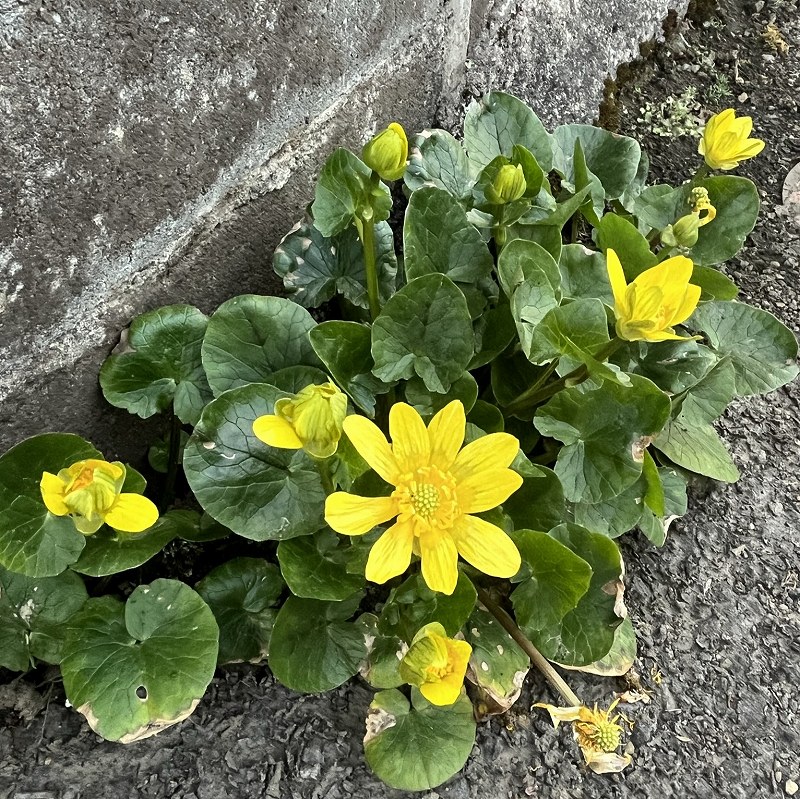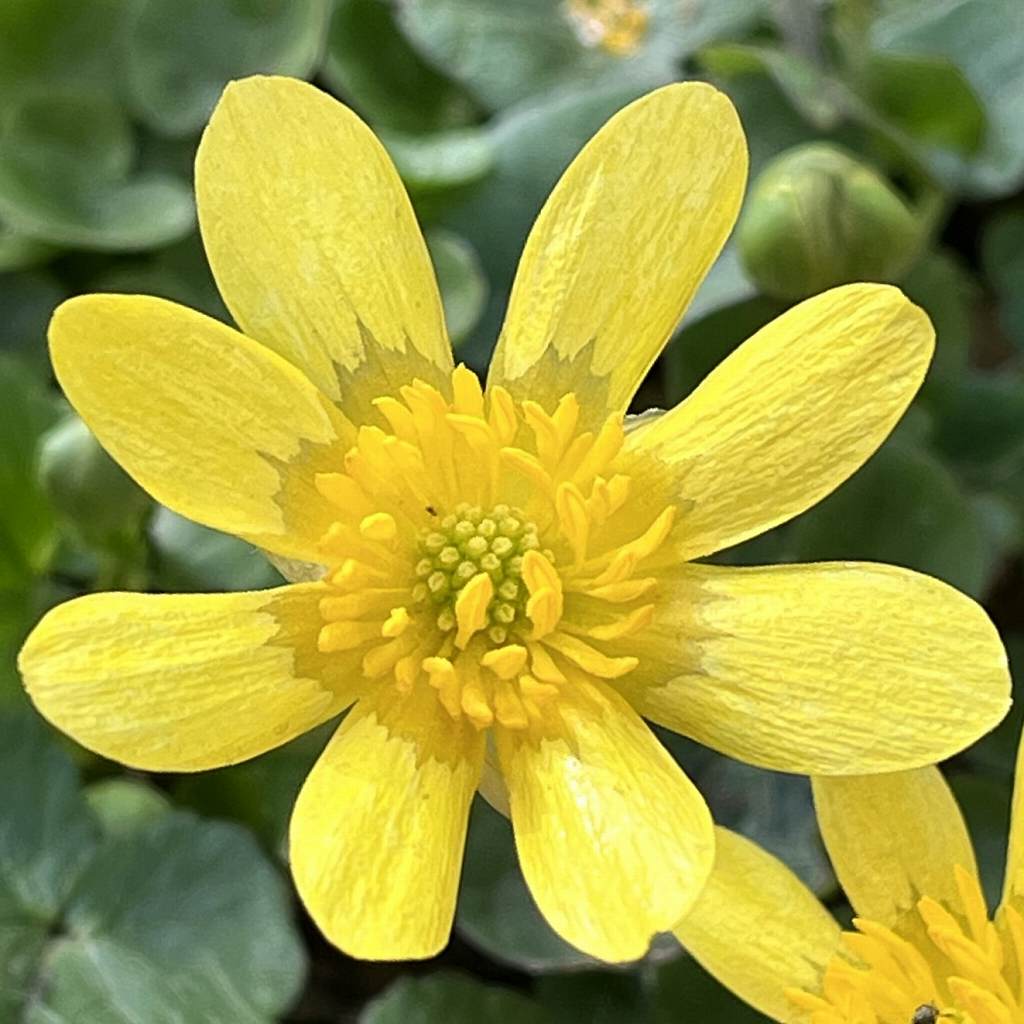キクザキリュウキンカは旺盛な外来雑草ですが、光沢のある黄金色の花が咲き、変異しやすく、その妙に惹かれる愛好家が少なくありません。
Lesser Celandine is a vigorous alien weed, but its glossy, golden-yellow flowers bloom and are prone to mutation, which attracts many enthusiasts.
【仮名】キクザキリュウキンカ, ヒメリュウキンカ
【和名】菊咲立金花, 姫立金花
【英名】Lesser Celandine, Pilewort
【学名】Ficaria verna
【誕生】04/ 08
【開花】02, 03, 04月
【花色】Yellow



キクザキリュウキンカ
キクザキリュウキンカの来歴
キクザキリュウキンカはキンポウゲ科の多年草。原産地は欧州で、山地の湿った草原や湖沼の近くに自生しています。日本へは園芸用に持ち込まれて逸出し、1992年に大阪府で、1997年に山形県で帰化を確認。花は黄色の一重咲きですが変異しやすく、白色や八重咲きなどもあります。
キクザキリュウキンカの名前
キクザキリュウキンカの名前の由来は、葉や花が日本在来の「立金花」に似るも、花被片の多い「菊咲き」だから。渡来当初は葉や花が小さく、「姫流金花」と呼ばれました。ラテン語の属名フィカリアは「無花果」を意味し、塊根に由来。種小名ベルナは「春咲き」という意味です。
キクザキリュウキンカの姿形
キクザキリュウキンカは、地下で紡錘形の塊根が肥大し、髭根が生えます。葉は地際で互生し、柄が長く、肉厚で光沢のあるハート形。花は短い萼片が3枚、長い花弁が10枚前後で、光沢があります。雌しべの周りに多くの雄しべが密生。花後は痩果が金平糖のような形に集まります。
キクザキリュウキンカの遠縁
キクザキリュウキンカに姿形が似ていて、和名の由来にもなっている「立金花」は同じキンポウゲ科でも遠縁のリュウキンカ属。美しい黄金色の花が咲き、「流金花」とも書かれます。日本在来で山間の湿地などに自生。花被片は5枚で、花弁のように見えるものの、すべて萼片です。
キクザキリュウキンカの利用
キクザキリュウキンカは汁液に毒性があり、皮膚の弱い人が触れると痒み、発疹、水膨れが生じる恐れも。在来植物を圧倒する旺盛な外来雑草として世界各地で問題になっています。一方、欧州では昔から痔などに用いられてきた薬草。変異の妙に惹かれる愛好家が少なくありません。
Lesser Celandine
Lesser Celandine is a perennial plant of the Ranunculaceae family. It is native to Europe and grows wild in wet meadows and near lakes in mountainous regions. It was brought to Japan for gardening and escaped, and naturalization was confirmed in Osaka Prefecture in 1992 and in Yamagata Prefecture in 1997. The flowers are single yellow flowers, but they are easy to mutate, and there are also white and double flowers.
The Japanese name of Lesser Celandine means that the leaves and flowers resemble the native Japanese “Caltha palustris”, but it has many petals. When it first came to Japan, the leaves and flowers were small, so it was called “Pretty Caltha palustris”. The Latin genus name Ficaria means “fig” and is derived from the root tuber. The species name Verna means “spring bloom”.
Lesser Celandine has enlarged, spindle-shaped tuberous roots and fibrous roots underground. The leaves are alternate at the ground, long-stalked, fleshy and glossy heart-shaped. The flower has 3 short sepals and about 10 long petals, and is glossy. Many stamens grow densely around the pistil. After flowering, achenes gather in a shape like Konpeito.
“Caltha palustris” is similar in shape to Lesser Celandine, which is the origin of its Japanese name, but it belongs to the genus Caltha, which is distantly related to the Ranunculaceae family. Beautiful golden flowers bloom, and it is also written as “flowing gold flower”. It is native to Japan and grows naturally in wetlands among mountains. There are five tepals, and although they look like petals, they are all sepals.
The sap of Lesser Celandine is toxic, and people with sensitive skin may experience itching, rashes, and blisters if they come in contact with it. It has become a problem all over the world as a vigorous alien weed that overwhelms native plants. On the other hand, it is a medicinal herb that has long been used for hemorrhoids in Europe. There are many enthusiasts who are attracted to mutations.


